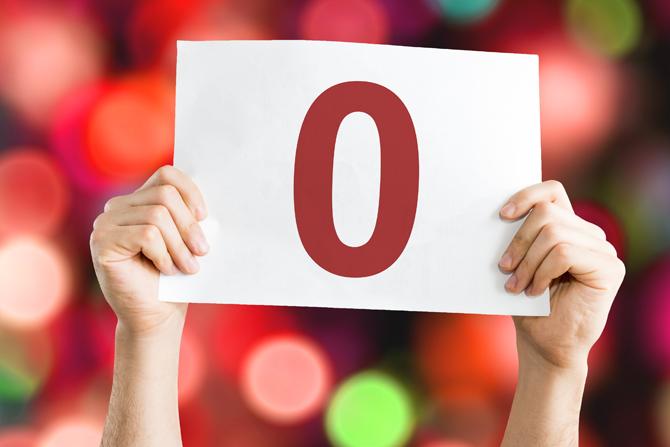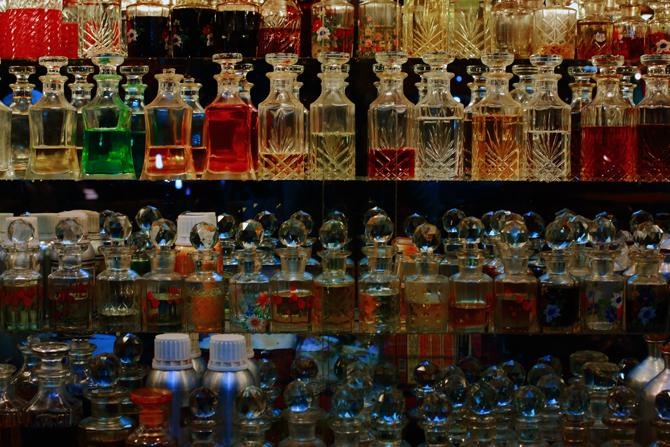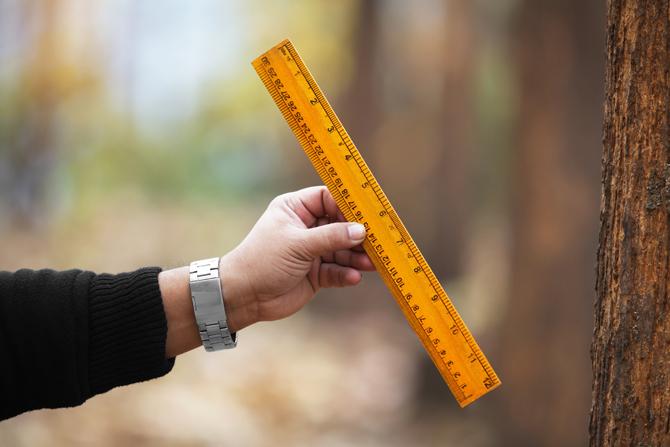The British have invented few things that we love, such as the game of cricket. But did you know? Before the British set foot in India, we have made some amazing inventions that shaped the way of the modern world. We look at 9 pre-British inventions

Games such as chess and ludo, button, rulers, and attar were all invented before the Pre-British era
Indian inventions and discoveries have been instrumental in shaping the face of the 21st-century modern day world. From small accessories such as a button to games such as chess and ludo, attar, rulers and many more, here's a look at 9 pre-British inventions that have shaped the modern world and we bet that these will make you go, “I didn’t know that”!
ADVERTISEMENT
Shampoo: Also known as champoo, the invention of shampoo dates to 1762. A variety of herbs and their extracts were used as shampoos since ancient times in India. The first and the most effective early shampoo was made by boiling Sapindus with dried Indian gooseberry (aamla) and a few other herbs, thus thereby using the strained extract as a shampoo. Sapindus is also known as Ksuna in ancient Indian texts and its fruit pulp contain saponins which has a natural surfactant. The extract of Ksuna, creates a lather which Indian texts identify as phenaka that makes the hair soft, shiny and manageable. Shikakai (Acacia concinna), soapnuts (Sapindus), hibiscus flowers, ritha (Sapindus mukorossi) and arappu (Albizzia amara) were other products that were used to cleanse the hair. The founding prophet and the first Guru of Sikhism, Guru Nanak made references to soapberry tree and soap in back in 16th century. Washing of hair and body massage (champu) during a daily bath was a part of indulgence of early colonial traders in India. When they returned to Europe, they introduced their newly learned habits, including the hair treatment that they called shampoo or champu!

Zero: "Jab zero diya mere bharat ne, duniya ko tab ginatee aayee," yesteryear actor Manoj Kumar's famous dialogue in the1970s Bollywood film 'Purab Aur Pachhim' which when translated in English reads — when India invented zero, the world learned to count. Yes, it's true! Indians were the first to use Zero as a symbol and also in arithmetic operations as well. In the earlier times, a blank space was used to denote zero, later when it created confusion a dot was used to denote zero which can also be founded in Bakhshali manuscript. In 500 AD circa, Indian scientist Aryabhata gave a new symbol for zero (0). Aryabhatta worked on the place value system and discovered zero for the very first time, making use of letters to indicate numbers and pointing out qualities. It was in India that the number system was discovered and Aryabhata is credited with the invention of Zero!
Button: Today we see intricate and stylish buttons on our apparels but did you know where did it originate? Well, the earliest sign of the use of buttons can be traced back to the Indus Valley Civilization where Ornamental buttons made from seashell are first used. The early buttons were carved into geometric shapes and had holes pierced into them so that they could be attached to clothing by using a thread. Ian McNeil (1990) holds that: In its early days the button was originally used more as an ornament than as a fastening and was also known to be found at Mohenjo-Daro site in the Indus Valley. The buttons were made of curved shells and were more than 5000 years old. Today in the 21st-century buttons are used in the modern clothing and fashion design as a small fastener and comes in various styles such as now plastic, metal, wood or seashell to name a few. Buttons may add or act as a fashion statement but in the field of archaeology, a button is seen as a significant artefact and discovery!

Chaturanga or Chess: Checkmate! the final nail in the coffin, the words synonymous with the game of chess. But, did you know? Chess originated in India during the Gupta dynasty (c. 280-550 CE). Known as chatrang and shatranj in Persian and Arabic languages the term derbies its name from Chaturanga in Sanskrit. Literally means an army of four divisions or four corps. Chess as a game was introduced to the Near East from India and became a part of the princely or courtly education of Persian nobility. Buddhist pilgrims, Silk Road traders and others further contributed to taking the game as far as the Far East where it was transformed and assimilated into a game often played on the intersection of the lines of the board rather than within the squares. Today, chess has spread throughout the world and many variants of the game have taken shape. Chaturanga reached Europe through Persia, the Byzantine empire, and the expanding Arabian empire. While the Muslims carried Shatranj to North Africa, Sicily, and Spain by the 10th century where it took its final modern-day form of being the 21st century game of chess.
Squat toilet or Flush toilets: Ancient toilets that used water were used in the Indus Valley Civilization. The cities of Harappa and Mohenjo-Daro had a flush toilet system in almost every house in place, attached to a sophisticated sewage system from the 3rd millennium B.C. The sanitation devices were first of its kind and the Indus Valley Civilization contains what is the world's earliest known system of flush toilets. The houses during the Indus Valley had a washing platform and a dedicated toilet or a waste disposal hole. The toilet holes were flushed by emptying a jar of water, drawn from the house's central well, through a clay brick pipe, and into a shared brick drain, that would feed into an adjacent soak pit (cesspit). The soak pits would be periodically emptied of their solid matter, possibly to be used as a fertiliser.
Wireless Communication/Microwave communication: For a long time Guglielmo Marconi has been credited as the inventor of wireless radio communication. Marconi received the 1909 Nobel Prize in Physics for contributions to the development of wireless telegraphy. But... the first public demonstration of the use of radio waves for communication was made by the renowned Indian scientist, Jagadish Chandra Bose. Bose first demonstrated the use of radio in Calcutta, back in 1895, two years before a similar demonstration was made by Marconi in England. This revolutionary demonstration by Bose formed the foundation of the technology used in mobile telephony, radars, satellite communication, radios, television broadcast, WiFi, remote controls and countless other applications that today play a central role in our daily lives. The crescograph which is a device for measuring growth in plants was also invented by the Bengali scientist Jagadish Bose in the early 20th century.

Ittar/Attar: The word 'attar', 'ittar' or 'itra' is believed to have been originated from the Persian word itir, meaning 'perfume'! Attar is one of the oldest natural fragrant that traces its origin to the Indus valley civilization where it was stored in the form of mud containers and perfume jars. Round copper stills were used during the Indus Valley to make Attar and the archaeological excavation dates them to be at least 5000 years old. References of perfumes or attar are still available in ‘Brhatsamhita', the Sanskrit encyclopedia. The fragrances were used for sale, physical enjoyment and religious services. The recipes of the different perfumes such as incense, talcum powder, bath powders, and mouth perfumes were given by Gandhayukti. Charaka Samhita the Ayurvedic text mentions the earliest distillation of Attar while Harshacharita highlights the use of Agarwood. And some of its first lovers include the Mughal nobles and the Nizams of Hyderabad.
Ludo/Pachisi: The most popular and widely played strategy game Ludo had its origin in India dating back to the 6th century. Also known as Pachisi, the game is played by two to four players and derives its name from derived from the Hindi word pachis, meaning twenty-five, the largest score that can be thrown in the game of Ludo. The game developed during tree medieval India and was also described as the 'National Game of India'. The earliest evidence of this game in India is its depiction of boards on the caves of Ajanta. The Pachisi game was played by the Mughal emperors of India; a notable example being that of Emperor Akbar, who played live Pachisi using girls from his harem. Today, in the modern term Pachisi is also known as Ludo that made its way to England during the British Raj! In 1938 American toy and game company Transogram introduced a mass market board game version called Game of India which was later marketed as Pa-Chiz-Si: The Game of India!

Rulers: Rulers were made from Ivory and were in use by the Indus Valley Civilization in what is today's Pakistan and Northwestern India prior to 1500 BCE. Excavations at Lothal (2400 BCE) have yielded one such ruler that calibrated to about 1/16 of an inch—less than 2 millimetres and was it was 4400 years old. Even the weights and measures of the Indus civilization reached far and wide to Persia and Central Asia, where they were further modified. Later in 1851, Anton Ullrich invented the folding ruler while a few years later in 1902, Frank Hunt made the flexible ruler.
 Subscribe today by clicking the link and stay updated with the latest news!" Click here!
Subscribe today by clicking the link and stay updated with the latest news!" Click here!






